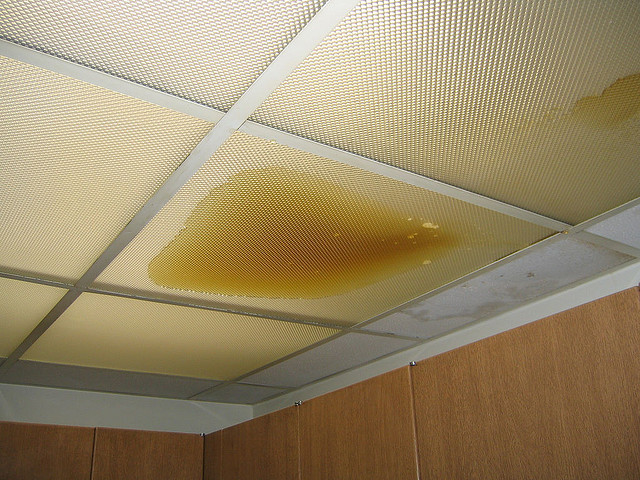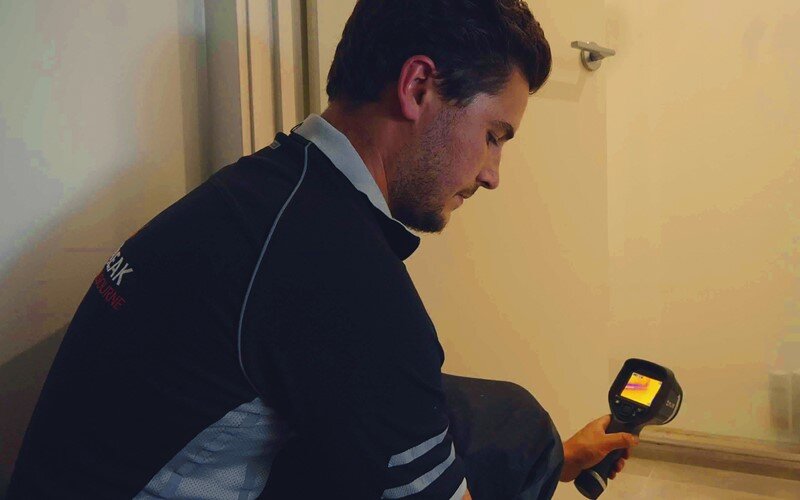Uncovering Concealed Water Line Leaks: 6 Clever Detection Hacks
Uncovering Concealed Water Line Leaks: 6 Clever Detection Hacks
Blog Article
We've noticed this post involving Leaking water lines below on the internet and reckoned it made good sense to relate it with you on this site.

Early detection of dripping water lines can mitigate a potential calamity. In addition to conserving you cash, it will certainly minimize the irritation and frustration. The minute you find a leakage, calling your plumber for repair services is the best remedy. Nevertheless, some little water leaks might not be visible. Here are some hacks that aid if you can not find it with your naked eyes.
1. Check Out the Water Meter
Examining it is a surefire way that helps you discover leaks. If it moves, that indicates a fast-moving leak. This implies you may have a sluggish leak that could even be underground.
2. Examine Water Intake
If you detect unexpected changes, in spite of your consumption being the exact same, it implies that you have leaks in your plumbing system. An unexpected spike in your costs suggests a fast-moving leak.
A consistent boost every month, even with the same behaviors, reveals you have a sluggish leak that's also gradually intensifying. Call a plumber to thoroughly examine your home, especially if you really feel a warm location on your floor with piping underneath.
3. Do a Food Coloring Examination
When it concerns water intake, 30% comes from commodes. Test to see if they are running effectively. Drop flecks of food color in the container as well as wait 10 minutes. If the color in some way infiltrates your bowl during that time without flushing, there's a leakage between the tank and also dish.
4. Asses Exterior Lines
Don't forget to examine your exterior water lines as well. Must water leak out of the connection, you have a loosened rubber gasket. One small leak can waste lots of water and increase your water expense.
5. Examine and Assess the Circumstance
Home owners must make it a habit to examine under the sink counters and even inside cupboards for any type of bad odor or mold development. These two red flags suggest a leak so timely attention is required. Doing regular evaluations, also bi-annually, can conserve you from a significant issue.
Examine for discolorations and deteriorating as many pipelines as well as devices have a life span. If you suspect dripping water lines in your plumbing system, don't wait for it to intensify.
Early discovery of dripping water lines can alleviate a possible calamity. Some small water leaks might not be noticeable. Checking it is a surefire means that helps you uncover leaks. One tiny leakage can waste tons of water as well as spike your water expense.
If you suspect dripping water lines in your plumbing system, don't wait for it to intensify.
WARNING SIGNS OF WATER LEAKAGE BEHIND THE WALL
PERSISTENT MUSTY ODORS
As water slowly drips from a leaky pipe inside the wall, flooring and sheetrock stay damp and develop an odor similar to wet cardboard. It generates a musty smell that can help you find hidden leaks.
MOLD IN UNUSUAL AREAS
Mold usually grows in wet areas like kitchens, baths and laundry rooms. If you spot the stuff on walls or baseboards in other rooms of the house, it’s a good indicator of undetected water leaks.
STAINS THAT GROW
When mold thrives around a leaky pipe, it sometimes takes hold on the inside surface of the affected wall. A growing stain on otherwise clean sheetrock is often your sign of a hidden plumbing problem.
PEELING OR BUBBLING WALLPAPER / PAINT
This clue is easy to miss in rooms that don’t get much use. When you see wallpaper separating along seams or paint bubbling or flaking off the wall, blame sheetrock that stays wet because of an undetected leak.
BUCKLED CEILINGS AND STAINED FLOORS
If ceilings or floors in bathrooms, kitchens or laundry areas develop structural problems, don’t rule out constant damp inside the walls. Wet sheetrock can affect adjacent framing, flooring and ceilings.
https://www.servicemasterbyzaba.com/blog/how-to-detect-water-leakage-in-walls/

As an enthusiastic person who reads on Leaking water lines, I figured sharing that post was sensible. Sharing is caring. Helping others is fun. Thank you for your time. Don't forget to stop by our site back soon.
Quick fix? Dial now. Report this page